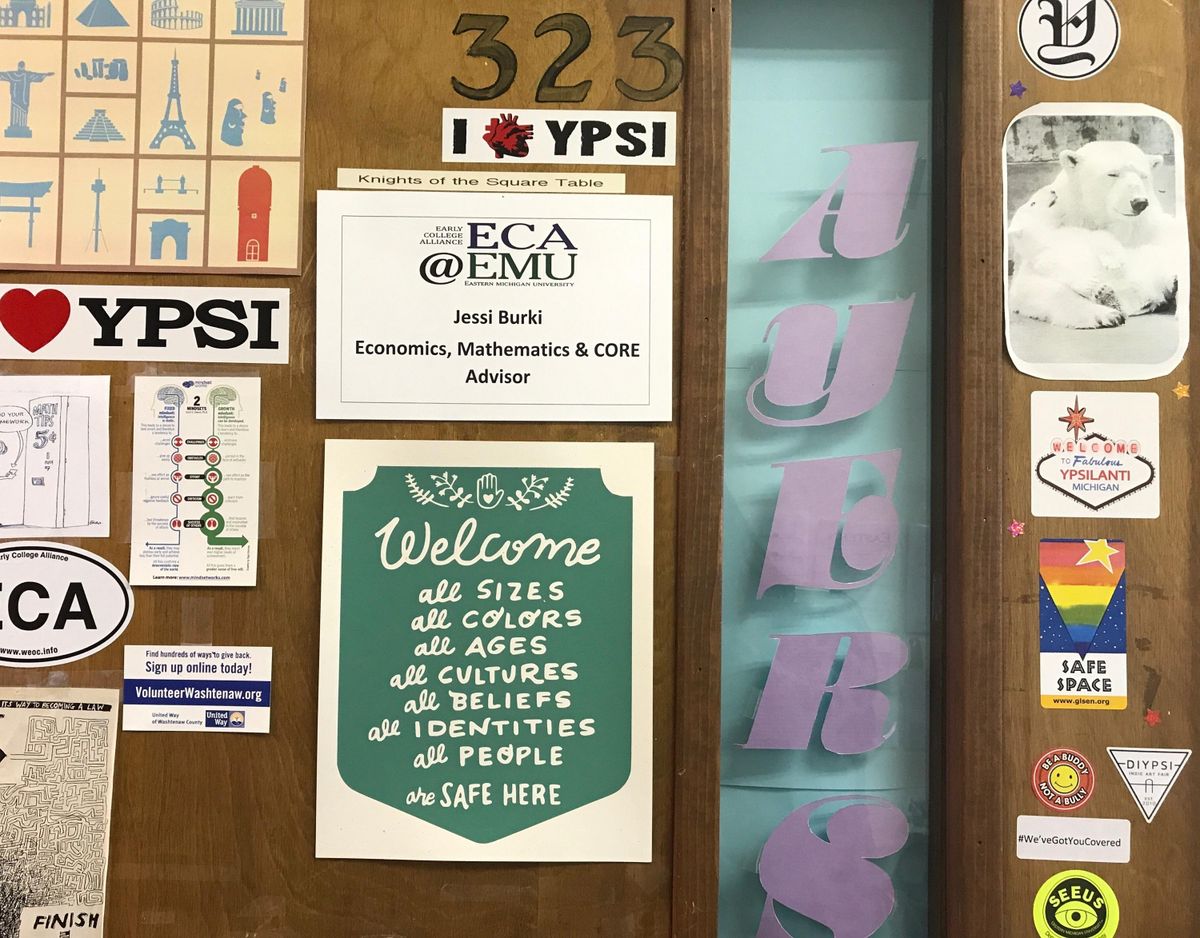Craftivism: Melding of crafting, activism is having a moment

Colleen Haraden-Gorski uses her embroidery skills these days to embellish quilts made by students at school and community-center workshops on themes of social justice and working together to make a difference.
Recently, she embroidered images of barbed wire and the serial numbers of concentration-camp victims on a square about the Holocaust. Another time, she worked on a square exploring prejudice within the African-American community about skin tone. Working on quilts that address historical injustices and current controversies provides her an outlet to communicate about issues important to her, and she is inspired by the work of the young people.
“I found my voice. It makes me feel hopeful,” said Haraden-Gorski, of Richmond, California, who also expresses her concerns by calling and emailing legislators. But “getting an automatic reply to an email or hearing a message that the legislator’s voicemail is too full – that’s not hopeful,” she said.
The combination of crafting and activism – sometimes called craftivism – is centuries-old. African-American slaves relayed information about the Underground Railroad through quilt squares. Suffragettes used sewing circles as a means of sharing political views. And women on both sides of the Civil War knit socks for soldiers to support the cause.
Early this year, women knit “pussy hats” ahead of Women’s Marches in Washington and around the country to protest Donald Trump’s election as president.
That post-election surge of activism is combining with a years-long trend toward do-it-yourself crafts and a step back from technology, said Elizabeth Garber, a professor of art at the University of Arizona in Tucson. Handmade goods also have new visibility because of online sites like Etsy.com and photo-sharing platforms like Instagram.
Time spent crafting often leads to problem-solving because it stimulates creativity and provides an opportunity to process emotions, said Betsy Greer, founder of the website Craftivism.com. Handiwork can be a “softer” way to start political discussions, she said: “It can provide a way to talk about things that are hard to talk about.”
Haraden-Gorski volunteers for the Social Justice Sewing Academy in Antioch, California. The organization mails the quilt squares to her and other volunteers to embellish. The finished quilts are displayed to promote awareness and activism.
“We’re reclaiming these crafts,” said Academy founder Sara Trail.
Some crafters seek out such projects to become part of a public effort, while others might knit or sew items that they quietly donate to a homeless shelter, Garber said.
“It appeals on different levels,” she said. “Some women want to be strident, but you could also do this in your own home and contribute something good.”
Danielle Christensen of Eagle River, Wisconsin, didn’t attend the Women’s March in Washington but wanted to do something to show her passion for the cause. An avid knitter, she began making pussy hats and selling them online. Profiting from the sales didn’t feel right, so she began donating her earnings to Planned Parenthood.
“It felt really good,” she said. “I’m not the type of person to approach someone to try and change their political viewpoints.”
Attending a women’s march in Lansing, Michigan, led screen printer Marcy Davy to add products to her line that promote feminism and tolerance. She’s currently working on a poster for restaurants to hang in their kitchens outlining the rights of foreign-born workers.
“This was a big decision. This is how I make my living,” Davy said. “I want to use the skills that I have to carry the momentum of resistance forward.”
Seeing how upset and confused many women were after Trump’s election, yoga teacher Tracey di Paolo wanted to do something. After knitting herself a pussy hat, she decided to host a knitting circle after one of her classes at the studio where she works in Phoenixville, Pennsylvania.
The get-togethers quickly became about more than knitting, she said. The women shared concerns about politics and their community.
“While we knitted, we talked. It created a sense of community,” di Paolo said. “It’s very easy to feel alone when you’re feeling frightened by what’s going on in the world.”
The group, which routinely was calling legislators about national issues, started looking for other ways to make a difference. They organized a community cleanup and raised funds for hurricane victims. Now, they are knitting hats for babies and chemotherapy patients at the local hospital.
“The pussy hats and knitting – it created an opportunity to create and talk and figure out how we could be useful to our community,” di Paolo said.